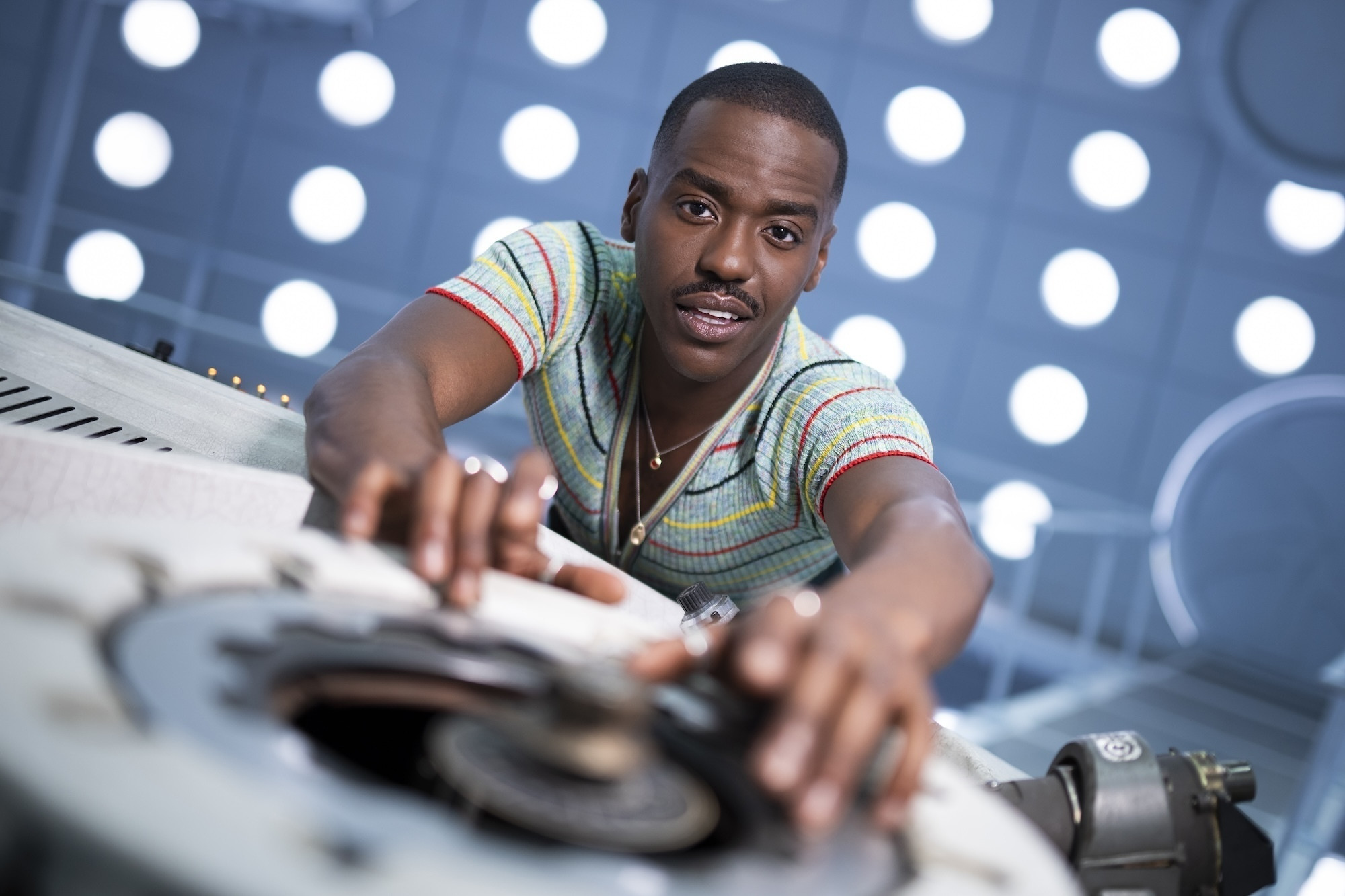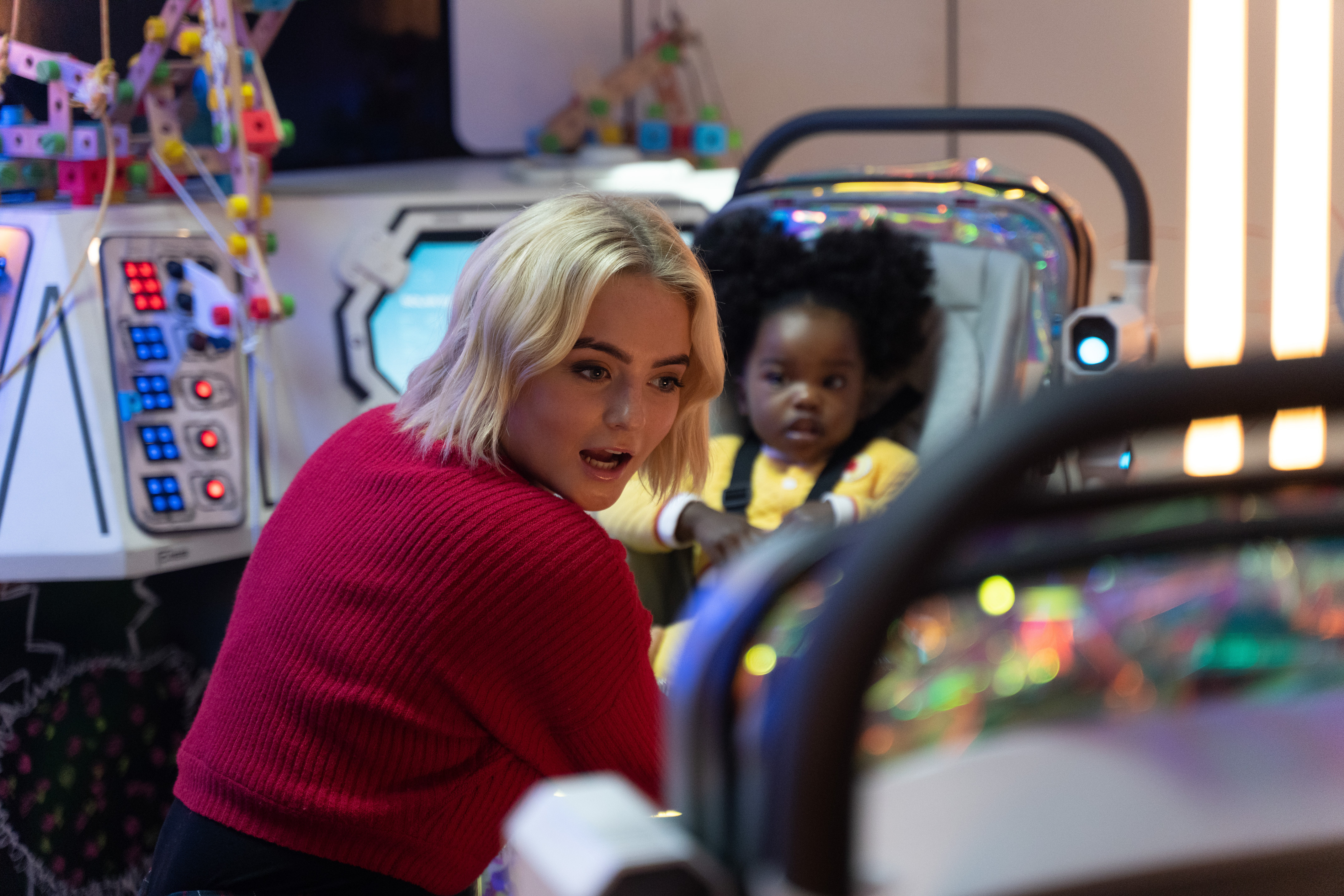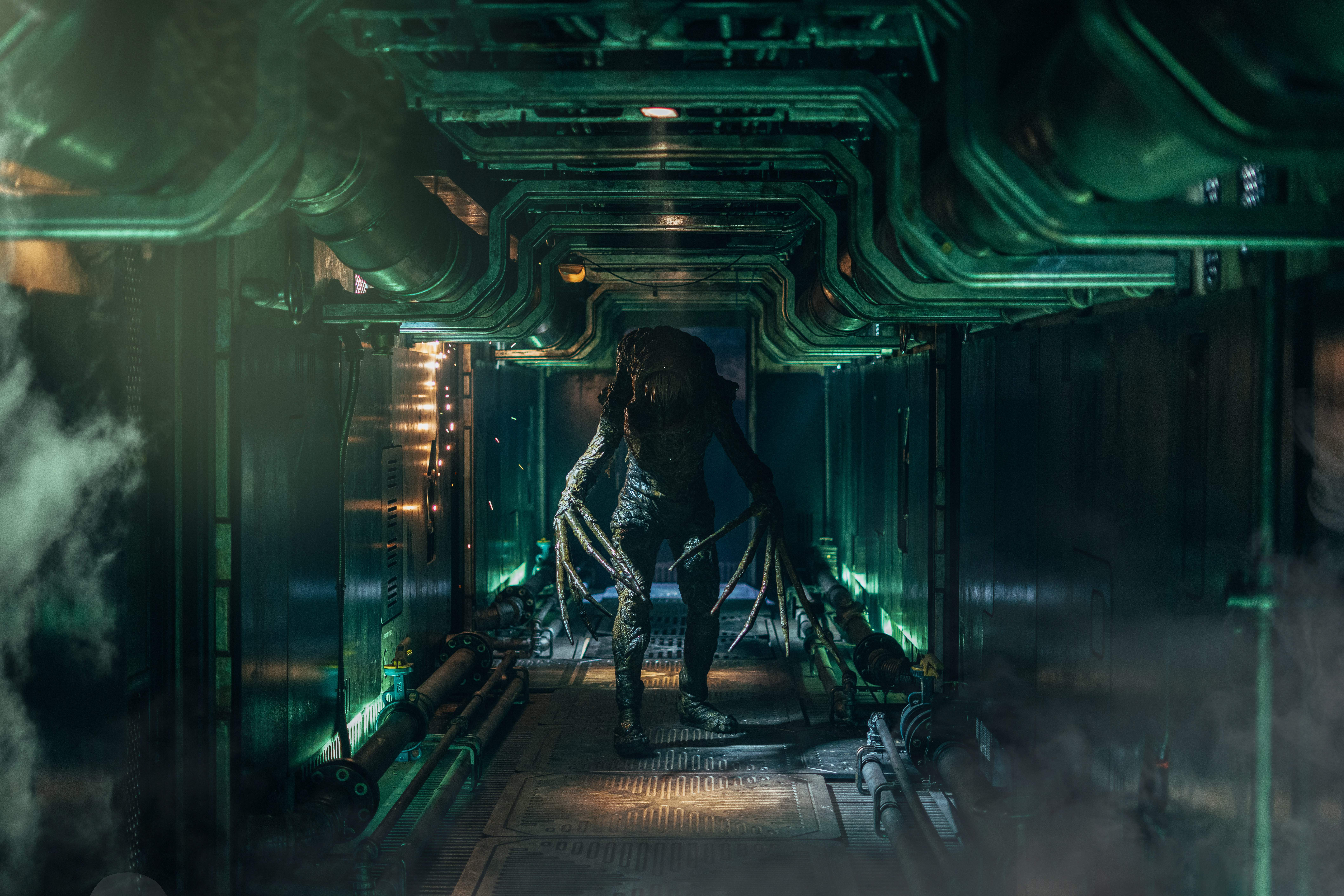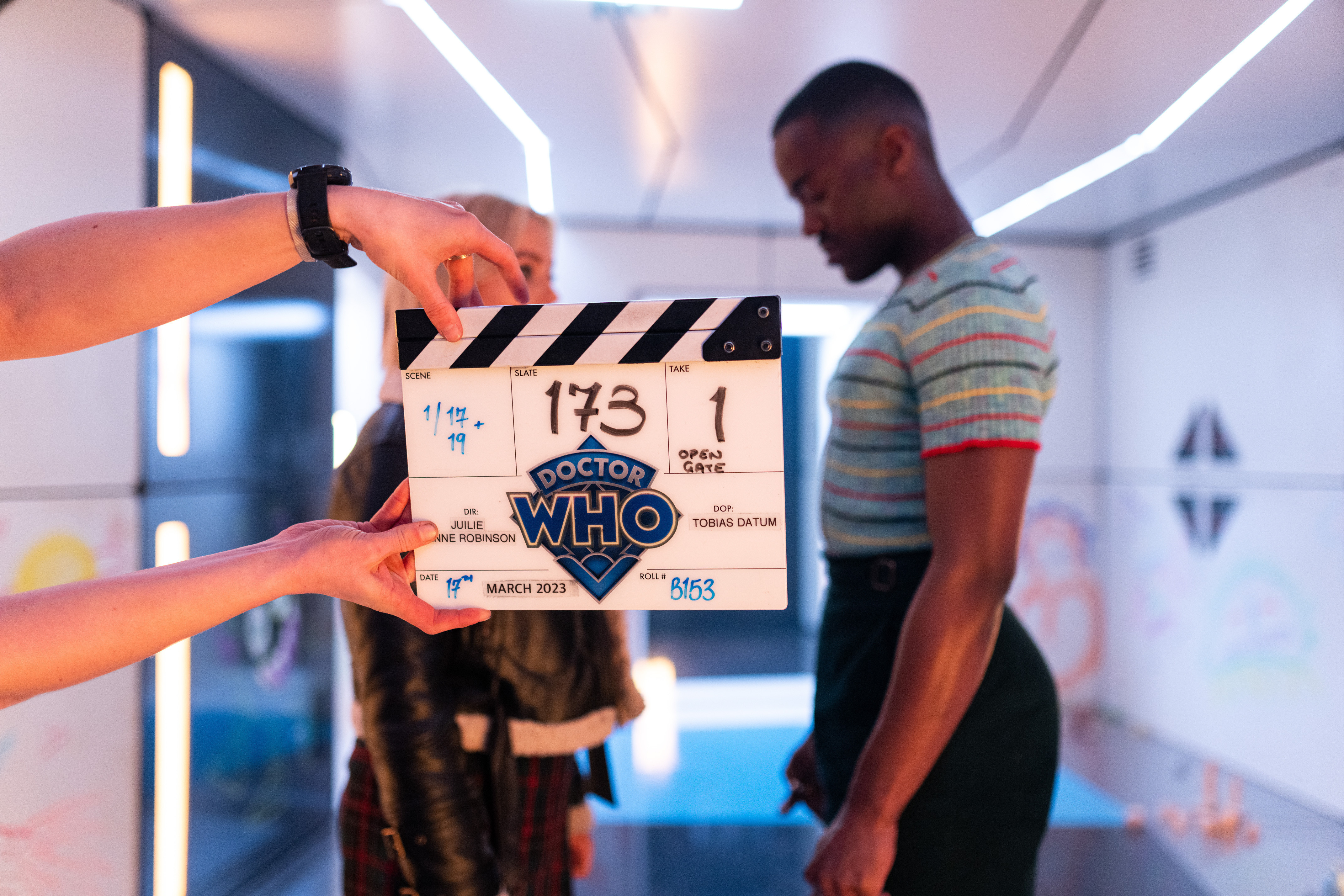The Whoniverse is buzzing with excitement as Ncuti Gatwa’s Fifteenth Doctor and Millie Gibson’s Ruby Sunday embark on their first full season of adventures. The season opener, “Space Babies,” has landed, and fans are eager to dissect every moment. But amidst the anticipation, a question has emerged: is Doctor Who ‘Space Babies’ a remake? Let’s clarify right away – no, “Space Babies” is not a remake. It’s a brand new, original episode, launching us headfirst into a fresh era of Doctor Who under the guidance of returning showrunner Russell T Davies.
Setting the Stage: What is ‘Space Babies’?
“Space Babies” marks the official series premiere for the Fifteenth Doctor and Ruby, following the festive special “The Church on Ruby Road.” Written by Russell T Davies, it throws the Doctor and Ruby into an extraordinary scenario: a spaceship orbiting a distant planet, populated solely by… talking babies. This isn’t a revisit to a classic story; it’s a bold leap into uncharted territory, showcasing the imaginative storytelling that Doctor Who is celebrated for.
Originality in the Whoniverse: Why ‘Space Babies’ is a Fresh Story
The beauty of Doctor Who lies in its constant reinvention. “Space Babies” perfectly embodies this spirit. It’s not drawing directly from the past; instead, it crafts a unique narrative centered around a truly bizarre and captivating concept. The talking space babies themselves are a testament to the show’s commitment to originality. This episode dives into themes of abandonment, childhood, and survival in a way that feels distinctly new, even within the vast tapestry of Doctor Who history.
The episode also delves into contemporary social commentary, subtly exploring reproductive rights and societal neglect through the lens of this fantastical scenario. This kind of pointed, yet nuanced, social critique is a hallmark of Russell T Davies’ writing, and it feels particularly potent within the fresh context of “Space Babies.” It’s this blend of imaginative sci-fi and relevant themes that solidifies “Space Babies” as an original piece, not a retread.
Key Elements of ‘Space Babies’: A Deep Dive into the New
While firmly planted in the soil of originality, “Space Babies” still resonates with classic Doctor Who charm. Let’s explore key aspects that highlight its fresh yet familiar appeal:
The Doctor’s Journey: A New Era Unfolds
 Ncuti Gatwa as the Doctor in Space Babies
Ncuti Gatwa as the Doctor in Space Babies
Ncuti Gatwa shines brightly as the Fifteenth Doctor in “Space Babies.” While his debut in “The Giggle” was impactful, and “The Church on Ruby Road” introduced us to his energy, “Space Babies” allows Gatwa to truly inhabit the role. The episode delves into the emotional weight of the Doctor’s past, particularly the genocide of the Time Lords. This isn’t a rehash of previous Time Lord stories, but a continued exploration of the Timeless Child arc initiated in previous seasons, pushing the Doctor’s character into compelling new emotional and philosophical territories.
His interactions with the Space Babies, especially his conversation with Poppy about “growing up wrong,” are particularly poignant. This reflects the ongoing exploration of unconventional origins and adoptive themes within the Doctor’s own expanded backstory, a thread that feels both contemporary and deeply rooted in the evolving mythology of the character.
Ruby’s Introduction: A Fresh Companion Perspective
 Millie Gibson as Ruby Sunday looking intrigued
Millie Gibson as Ruby Sunday looking intrigued
Millie Gibson’s Ruby Sunday is a breath of fresh air. Her enthusiastic and inquisitive nature provides a delightful contrast to some of the more reserved reactions of previous companions. “Space Babies” cleverly draws parallels between Ruby’s mysterious birth and the Doctor’s own enigmatic origins, hinting at deeper connections to be explored throughout the season.
Unlike many companions who gradually learn about the Doctor’s world, Ruby is immersed in exposition relatively quickly. While some viewers might consider this an “infodump,” it serves to accelerate the bond between the Doctor and Ruby, forging a closer dynamic from the outset. This contrasts with the Thirteenth Doctor’s era, where companions were often kept at arm’s length regarding the Doctor’s personal history. This fresh approach to companion development promises a more intimate and collaborative partnership.
The Space Babies Concept: Uniquely Doctor Who
 A group of CGI Space Babies in their spaceship environment
A group of CGI Space Babies in their spaceship environment
The core concept of “Space Babies” is undeniably original and distinctly Doctor Who. Talking babies running a spaceship is an inherently whimsical and bizarre premise, perfectly suited to the show’s imaginative spirit. While the CGI mouths on the babies might have moments that don’t fully convince, the underlying idea and its thematic implications are strong.
Golda Rosheuvel as Jocelyn Sancerre adds depth to the narrative. Her self-imposed isolation from the babies for years, driven by a fear of exposing them to death, is a compelling and humanizing element within this fantastical scenario. The Nan-E filter, a humorous yet practical technological element, further enhances the episode’s quirky originality.
The Bogeyman: A New Creature Feature
 The Bogeyman creature lurking in the spaceship
The Bogeyman creature lurking in the spaceship
The Bogeyman is a newly conceived creature for Doctor Who, not a revamp of a classic monster. Its design, with spindly limbs and a forward-mounted head, is effectively realized and visually distinct. Director Julie Anne Robinson employs clever techniques, like quick glimpses and strategic lighting, to maintain the illusion of a real, menacing creature.
While the Bogeyman’s true nature might be somewhat predictable, the reveal is well-executed within the narrative. However, the creature’s limited interaction with the main plot and its somewhat underdeveloped threat level are points that could have been expanded upon. Despite this, the Bogeyman remains a fresh addition to the Doctor Who bestiary, contributing to the episode’s overall originality.
Directorial Vision: Enhancing the Freshness
 The Doctor and Ruby in a dynamic pose with the TARDIS in the background
The Doctor and Ruby in a dynamic pose with the TARDIS in the background
Julie Anne Robinson’s direction in “Space Babies” is a significant asset, injecting a dynamic visual energy into the episode. From the playful moment of the Doctor and Ruby physically taking off with the TARDIS, to the subtle quivering of the babies’ pushchairs to convey fear, Robinson’s choices enhance the storytelling and emotional resonance.
The scene where snow begins to fall as the Doctor and Ruby reflect on the church on Ruby Road is particularly striking. The seamless match cuts between the space station and the church, coupled with Murray Gold’s evocative score, create a truly memorable and visually poetic moment, adding to the episode’s unique atmosphere.
Dispelling Remake Rumors
Any notion of “Space Babies” being a remake is unfounded. It’s an entirely original story, conceived for the new era of Doctor Who. While Doctor Who often draws inspiration from its own rich history and explores recurring themes, “Space Babies” stands firmly on its own as a fresh, inventive adventure. There are no direct parallels to past episodes that would categorize it as a remake. Instead, it’s a testament to the enduring creativity of the show and its capacity to continually surprise and innovate.
Conclusion: Embrace the New Adventure
“Space Babies” is a resounding declaration that Doctor Who, under Russell T Davies and with Ncuti Gatwa and Millie Gibson at the helm, is boldly moving forward. It’s not looking back to retread old ground, but forging exciting new paths. So, dismiss any thoughts of remakes and embrace “Space Babies” for what it truly is: a funny, thought-provoking, and wonderfully original Doctor Who adventure that sets the stage for a thrilling new season. It’s a reminder that Doctor Who’s heart beats strongest when it’s exploring the uncharted and the imaginative, offering viewers something genuinely new and unexpected.
